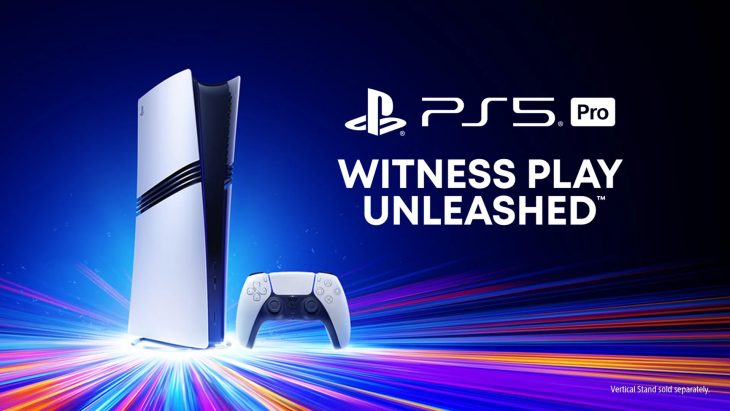PS5 Pro: assessing its sales potential

Image source: Sony
Should you as a wholesaler or a retailer invest in pre-ordering PlayStation 5 Pro stock?
The launch of the PS5 Pro has sparked mixed reactions, especially given its $700 price point. Some critics suggest that such a high price tag could hinder the console’s success, with comparisons to the previous mid-generation upgrade, the PS4 Pro, which sold 14.5 million units over its lifetime. However, analysts believe there is still a viable market for this high-end device, driven by a dedicated segment of gamers who seek out the best in gaming technology.
At its core, the PS5 Pro aims to target a specific consumer base: those who prioritize cutting-edge performance and are willing to pay a premium for the latest upgrades. Analysts point out that while the Pro model is unlikely to dramatically shift overall PS5 sales dynamics, it will appeal to existing PS5 owners or those upgrading from the PS4, shifting their attention from the standard model to the Pro. This mirrors the performance of the PS4 Pro, where most sales came from users upgrading within the PlayStation ecosystem.
One key factor in determining the PS5 Pro’s success will be its ability to attract “power users.” These are gamers who are not only willing to spend more on hardware but also tend to invest heavily in software, services, and accessories. This is a critical element of Sony’s strategy, as the company hopes to boost revenue through increased spending by these high-end consumers.
In terms of sales forecasts, the PS5 Pro is expected to sell around 1.3 million units by the end of 2024, slightly behind the 1.7 million units sold by the PS4 Pro during its launch window. However, long-term predictions suggest the Pro model could eventually reach up to 13 million units by 2029, similar to the PS4 Pro’s overall performance.
One notable observation is the rising trend of higher spending on consumer electronics. Over the years, consumers have grown accustomed to paying more for high-end devices, whether it’s the latest smartphones, PCs, or gaming consoles. This shift in consumer behavior is reflected in the console market, where premium models and features, such as advanced controllers or upgraded GPUs, have become increasingly popular. Gamers today are more willing to invest in the latest technologies to enhance their gaming experience, even if the improvements are incremental.
From a global perspective, the PS5 Pro is well-positioned to benefit from markets with growing disposable income, such as China and parts of the Middle East. These regions, which were not as prominent during the PS4 Pro’s launch, now represent significant growth opportunities for Sony. This global expansion of the PlayStation brand increases the potential for higher sales outside of traditional markets like the US and Europe.
However, there are challenges. The PS5 Pro’s $700 price tag is at the upper limit of what consumers are willing to pay for a console upgrade. In some regions, such as Japan and Europe, the price difference between the PS5 Pro and the standard model is even more pronounced, with the Pro being up to 50% more expensive. This steep price increase could deter some potential buyers, especially in markets where the cost of living is a major concern.
Moreover, there are questions about the value proposition of the PS5 Pro. Unlike the PS4 Pro, which offered a clear advantage with support for 4K TVs, the improvements in the PS5 Pro are more subtle. Features like faster rendering, advanced ray-tracing, and AI upscaling sound impressive, but the actual difference in graphical fidelity and performance may not be as noticeable to the average gamer. For many, the $700 price tag may not justify the incremental improvements, especially in a challenging economic climate.
In the long run, the PS5 Pro’s success will depend on several factors. First, the macroeconomic environment and the financial health of consumers will play a significant role. If disposable income remains tight, fewer people may be willing to invest in a premium console. Second, Sony will need to demonstrate that the Pro significantly enhances the gaming experience. While some games may utilize the extra power of the Pro, if most titles are optimized for the standard PS5, the Pro’s appeal could be limited.
Additionally, the shift towards digital gaming presents another challenge. The PS5 Pro is likely to face competition from digital-only consoles, and consumers may be hesitant to pay extra for an external disc drive. This could limit the Pro’s appeal, especially among gamers who are transitioning to an all-digital gaming ecosystem.
Ultimately, the PS5 Pro is positioned to cater to a niche market of high-end gamers. While it is unlikely to revolutionize the console market, it will serve as a premium option for those who demand the best performance and are willing to pay for it. However, whether this niche is large enough to justify the Pro’s existence remains to be seen, and the console’s long-term success will largely depend on how well Sony can balance price, performance, and consumer demand in the evolving gaming landscape.



